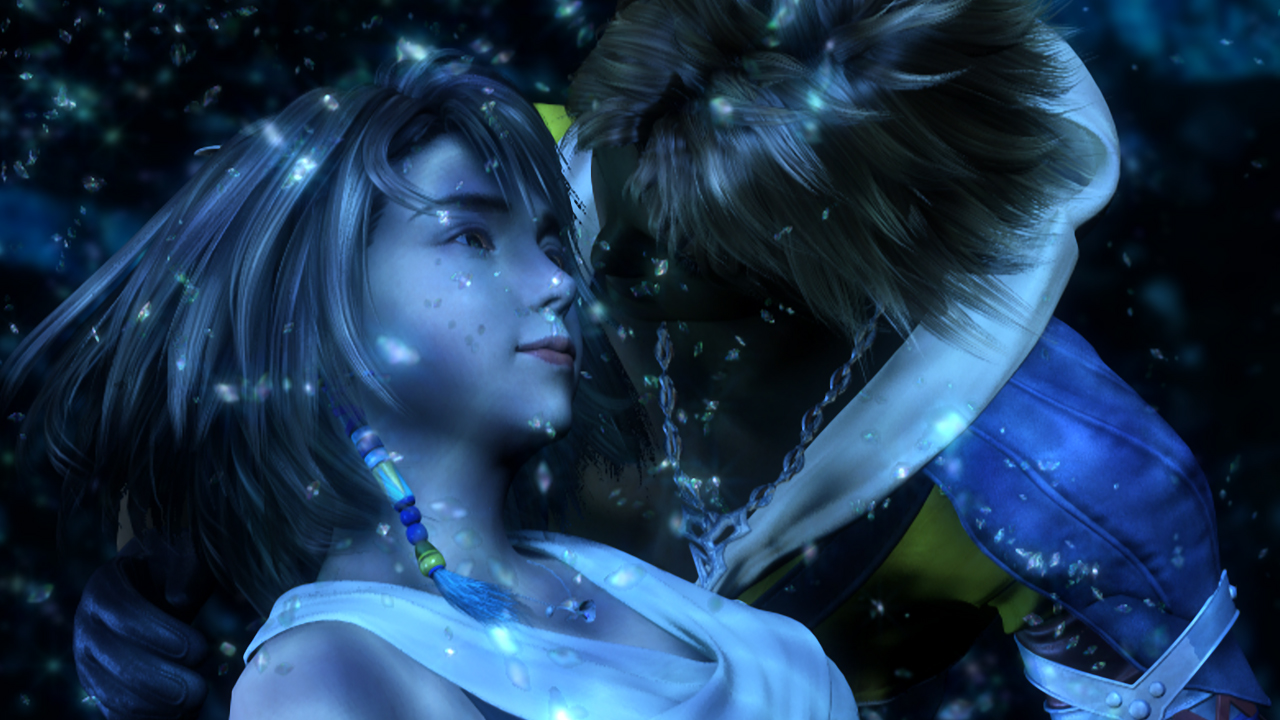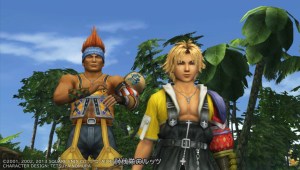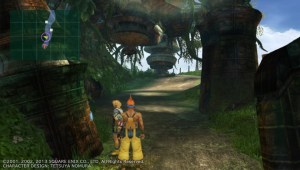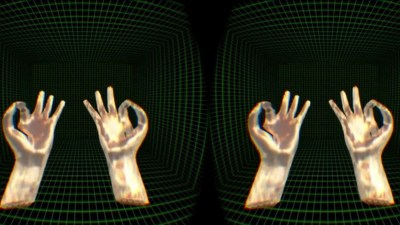If you’re reading this, the chances are you already know if you like Final Fantasy X or not.
If you don’t there are plenty of reviews of the original game out there - so you don’t need me to tell you if Final Fantasy X HD is for you. But you might be interested in hearing about how the game holds up a decade on in this HD remaster.
Final Fantasy X provided one of many firsts for the series; it marked the start of a shift in the series away from pre-rendered backgrounds and text-box chatter towards full-3D and voice acting. Players were awed back then that the story was fully voiced and that the camera swooped and panned, giving the game a filmic feel. But if that is all the game had going for it doesn’t that make FFX a hard sell in 2014? That’s what we thought coming into FFX HD.
So it should come as a surprise that upon revisiting it, we actually came away more positively enthused than we did a decade earlier. Part of the reason for this is the general state of decay that the franchise is experiencing; this made us appreciate all of the things this game does that Square Enix has struggled to recapture, and we think another part of it is that FFX simply did so many things right the first time that we never fully appreciated until now.
In the first few hours, the game confidently flaunts its 3D presentation with mature ease; interspersing battles with near seamless integration of voiced dialogue and dynamic camera cuts, even showing off lip-synching so accurate you can lip-read it. This was and still is an impressive first rodeo.
The game even displays a kind of modesty in its age that is increasingly harder to find in modern JRPGs; outside of a mini-map there is little in the way of a persistent UI or button prompts, the battle UI is large and easy to read (this time optimized specifically for the small screen) but isn’t cluttered with confounding blinking gauges and meters. The UI doesn’t warble at you in flagrant Engrish. It’s all very ‘old’, in a lost-art-of-simplicity sort of way. It’s initially alienating to walk up to an interesting pattern on a wall and find there is no exclamation mark or button prompt telling you that you should look there (and nowhere else), but liberating at the same time.
This aspect of game design continues throughout the game. Final Fantasy X HD never pretends to be more than it is, it never confuses the player with jargon that they are just expected to get; a spade is normally a spade.
Where many games would still be awkwardly trying to drag you hand-in-hand to the next tutorial, FFX has already given you almost unfettered access to every single character and game sub-system. It takes Final Fantasy X HD about 14 hours to gracefully sprint to the point that most RPGs take twice the time to reach. There are no awkward forced detours in the story that would be better served as side-content. If FFX wants to explore a character it finds a way to weave it into the narrative in way that adds rather than detracts (or distracts) from the core narrative.
The pacing in FFX isn’t just fast, but variable; it understands that the lows are just as important as the highs in creating an overall experience. One minute it will task your party with a valiant raid on an enemy fortress and then follow it up with a melancholic low where you re-assume control of a different character who has to fight alone. The narrative doesn’t linger on any one emotional landscape for too long and that combined with its economic use of time stops the player from feeling burnt out.
Speaking of emotional landscapes, FFX knows how to play your emotions with almost ruthlessly calculated precision; you will laugh when it wants to you laugh, rejoice when it wants you to rejoice and when it wants to twist the knife in and make it hurt, it will hurt. FFX HD pulls this off in part because of the stellar quality of the voice work which is used for the story and when talking to important characters and we sincerely hope that the English release has the option for the Japanese voice track. The game stops short of being fully voiced which feels strange; it would have been nice to have had minor characters and NPCs voiced for this version of the game.
These areas renewed our appreciation for FFX. But there are also things that were true then which have gone unchanged, and have become less acceptable due to the passage of time. For example, although the story respects your time the optional end-game content washes it down the sink-hole. You will need a lot of patience to put up with the massive grind necessary to beat side-bosses and get through the mini-games. The mini-games (excluding Blitzball, a kind of underwater Football that is popular in the game world) vary from dull to outright infuriating. But that said the optional content is just that: optional.
Characters still move around the stage during cutscenes in awkward bursts of running (the result of only having two movement speeds); it was awkward ten years ago and it is still awkward now.
The camera is also entirely fixed and tends to snap between two different angles rather than pan smoothly between them. To stop this being disorienting the game locks the direction you are running in to the direction you are holding down. Holding down a direction can cause problems when the camera angle suddenly changes. This is only a minor nuisance, but when these things do happen it reminds you that this is just an up-scaled port of a PS2 game.
There is also still no option to skip cutscenes, something that shouldn’t have been hard to implement given that Final Fantasy X-2 had this feature. It’s a shame because this was one of the most requested features amongst fans.
Having to watch a cutscene again before a boss fight is inconvenient; fortunately you are normally never more than 5-10 minutes away from a save point in cutscene dense areas. Factor in the near i
nstant save and load times and the large battle UI and you have a game that is, to its credit, very player friendly.
There are some new additions to this HD remaster. Most notable is the inclusion of a new swipe-menu. Swipe the touchscreen rightwards and you open a panel that gives you the choice to heal your entire party though items or magic. Just like that, the post-battle bureaucracy of healing up your party has been almost entirely removed. It’s simple, elegant and doesn’t clutter the interface. It’s an innovative design choice that the entire genre could benefit from taking notice of.
Is this the definitive version of the game? Well, the good news is that this isn’t an ugly, butchered, frame-chugging mess like the Jak and Daxter compilation for the Vita. The bad news is that it isn’t perfect either.
Visually speaking, this is one of the better High-Definition remasters out there. All characters (major and NPC) and enemies exhibit anatomically correct shadows which don’t display any pixelation or flickering even
under scrutiny. In addition, this HD version sports effects like realistic looking leather. Clothing textures like silk and leather often get cut out of Vita versions of games (for example, Hatsune Miku, Dead or Alive 5) so it is nice to see there has been no compromise here.
Environmental Textures are a little less impressive as they don’t appear to be full HD: there is little in the way of texture filtering. To be honest though, outside of some very select locations in the game the combination of the small screen and the distance ensures that the game normally looks sharp and crisp.
Just like the PS2 version the transition between in-game action and CG is seamless and playback is smooth. In order to get a 16:9 aspect ratio, the 4:3 source content has been pan-and-scanned and then upscaled but despite that we couldn’t find much in the way of upscaling artifacts, not even when examining the gradient in dark colors.
FFX on Playstation 2 also used pre-renders for some of the indoor areas, which are still present here. They look a little flat and don’t appear convincingly 3D but this is more of an issue with the source material rather than the remaster.
There has been one major change to the graphics in this re-release: the character models. In the original, the game had 3 versions of each of the protagonists: high-poly models for major cutscenes, medium-poly character for battle and low-poly characters for field exploration. The low-poly characters have now been phased out of the game, meaning that battle and field now share the same character models (some of which have undergone polygon surgery). Truth be told, some people are not going to like how ugly these models can appear at certain angles.
You might expect that moving a game into high definition would be a simple case of it looking prettier but it turns out that the low resolution and distance from our CRT’s was actually hiding a lot of FFX’s graphical trickery . Cutscenes often mixed and matched high and low poly versions of characters in the same frame. In select scenes the same character would change back and forth between the high and low poly model every time the camera panned back to them. When characters had conversations with the camera set at a distance they weren’t lip synching at all but simply nodding their heads. In HD all of the cheating is displayed in crystal clarity. It’s a bit like a Blu-ray remaster of an old film where suddenly the increased clarity means you can make out the stunt wires and imperfections in the make-up.
The framerate is another area where this remaster fares less favorably. Field exploration and battles run mostly at a smooth 30FPS. There are some minor framerate drops during specific battle animations but the game is completely turn-based so it isn’t like the drops are going to impact the game in a major way. During story sequences that take in place in towns if the entire party + a few NPCs are on screen at the same time the framerate drops into the 20s. This is noticeable because almost every other scene in the story after the first few hours matches that description. When I revisited the same areas later in the game when there were fewer NPCs around, I found the framerate was back to a stable 30.
On the audio front the game also holds up well. Stereo separation is convincing enough that I could almost echolocate sound sources. The HD remaster has a new soundtrack that uses real instruments instead of MIDI. Some will lament the lack of an option to switch to the original soundtrack, but none of the emotional impact is diminished by the new arrangements.
The one issue that sticks out is how voice track playback and lip-synching were consistently off by a split-second. For now, prospective buyers are urged to err on the side of physical media rather than the PSN digital version.
North Americans are in for a treat this time around as FFX HD includes extra content that was only released in Japanese/European versions of the original FFX. The biggest inclusions are a smattering of super powerful optional bosses and the Advanced Sphere Grid.
At the beginning of the game you are given the choice of the Standard or Advanced Sphere Grids. This choice determines how much flexibility you have in customizing your characters. If you go with the Standard Sphere Grid your characters grow in a linear way and acquire the abilities that the game ordains they should. You don’t have to make many choices on how to develop your character as the game dictates it to you. The upside is that the difficulty level of the game is curated to match the abilities/stats of your party.
If you choose the Advanced Sphere Grid you are given a lot of freedom on how to approach the game. If you want to make a character that is normally a mage into a physical attacker there is no reason you can’t. There are also fewer restrictions placed on which skills you can learn and when. The Advanced Sphere Grid is stingier with handing out stat improvements than the standard grid so your characters are weaker than they would normally be, but more versatile because of the freedom they have to gain exotic abilities.
This balance encourages the player to compensate for weaker characters by playing smarter rather than harder. When playing using the Standard grid we tended to just stick to characters we liked whereas on the Advanced grid we were tagging characters in and out all the time to make use of their eclectic skill sets. Selecting Attack over and over again simply isn’t a viable strategy in this mode unless you have more time than sense.
The downside to the Advanced Sphere Grid is the difficulty is less balanced. Depending on how you choose to develop your characters some fights that were hard on Standard become one-sided in your favor.
In conclusion, Final Fantasy X HD Remaster is a chance to revisit a game that in retrospect may well have been better than you first realized. Strong presentation ensures that the game still holds up well today, while a well-paced story and smart player-friendly/UI design choices make it approachable. The remastering on display is generally good, but let down by inconsistent graphics and framerate issues. The problems might dissuade you from playing this game on the small screen - but don’t be tempted to pass Final Fantasy X HD Remaster up entirely, as you’ll be missing out on a 40 hour rollercoaster.
[Note: This is a review of the Japanese import of Final Fantasy X HD. In Japan, FFX and FFX-2 are being sold separately and so we will be reviewing them separately; in the US and Europe, they will be packaged together.]







Pingback: Final Fantasy X/ X-2 HD Remaster On PS4: Is It Worth It? | Continue Play()